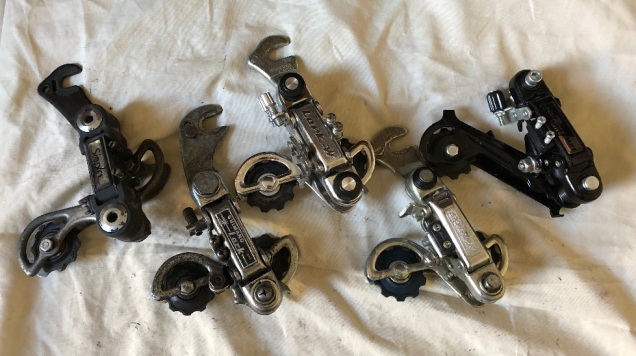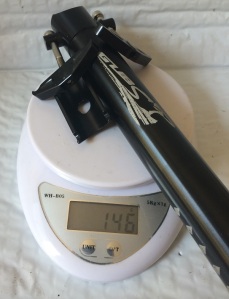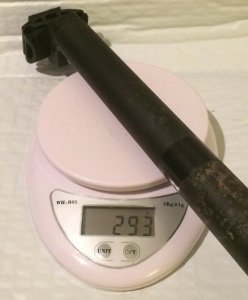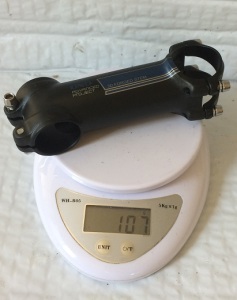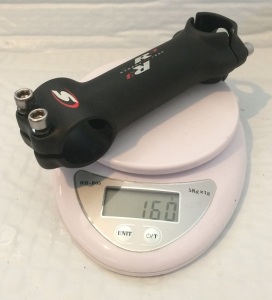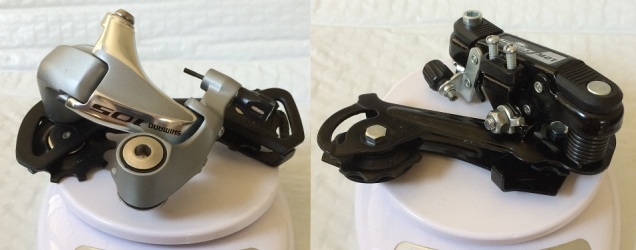Since the last update, I’ve purchased and tested over a dozen products, and written drafts for several articles, but have not had it in me to complete them. I have soured trying to find the best deals, had issues with several vendors, and in the year 2020, the weightweenies site may as well be called wattweenies. Sub-15-lb bikes and counting grams are no longer in vogue and I don’t have the equipment nor money to seriously pursue testing aero and frictional losses. There’s not much left for me to do on my personal non-carbon weightweenie project until I can get a cheap XG-1190 to push it below 14 pounds. Just some bad experiences off the top of my head.
Manufacturer “S” is a major manufacturer of tires of which I purchased their premium top tier tires, used in the pro peloton, in various sizes. The company advertises “+/- 8%” tolerances in terms of weight. I weighed about a dozen of these top shelf tires in various sizes from various production batches. From memory it was more like -0%/+16%. Upon contacting the company, they essentially told me that they could not be expected to maintain their advertised +/-8% tolerances, and I was being unreasonable by not allowing for an additional tolerance for their tolerance. It was not that manufacturing tolerances meant that the weight wasn’t the same as the nominal weight down to the gram. The company had clearly advertised tolerances, which were pretty generous at +/-8%. The company decided that the upper bound of +8% should be their average weight and that there should be an additional +/-x% allowable tolerance on top of that. For reference, 8% is over a pound on a 15 pound bike, 8% is the difference between R8000 and R7000, it might be marginal, but it’s not nothing. Of course the most infuriating thing was that they thought it was only reasonable there should be an additional tolerance on top of their advertised tolerance. Bicycle Rolling Resistance also shows that the tires for this company tend to be falsely advertised and come in overweight despite otherwise performing well. Fudging numbers isn’t unique to manufacturer “S” but tolerances for tolerances was really really dumb conversation from one of the premier companies manufacturing cycling tires.
Mail order shop “N” now only exists in name, formerly being the mail order wing of major chain shop “P” which went bankrupt and shut down all retail locations. I had previously suggested that their carbon fiber was safe, and probably had decent QC as they would be legally liable for any defective products, and at the very least if the carbon exploded, you or your surviving loved ones had someone to sue and collect damages from (no longer the case, being that they went bankrupt and out of business). I had purchased a frame to build up for an economy example build for a family member. They had legal boilerplate saying that they couldn’t be held liable for anything, but it probably would not have stood up in court. The frame I purchased had an obviously de-laminating fork, which is a major safety concern. This should have been caught in QC and was not merely cosmetic. Even worse, this frame was then put up on their returned items page, meaning it should have gone through some QC not just from the factory, but their US based warehouse staff as their returns were supposed to be guaranteed to be inspected. I found this extremely upsetting, got heated under the collar and tried to demand an apology and an explanation why the company showed such blatant disregard for the safety of their customers. I did not get either, probably in part because they were hurting financially at this point, and in part because they did not want to admit fault for legal reasons (even though no damages had been claimed or suffered except wanting a replacement frame, which they refused). Instead I received a letter from a high ranking executive saying I was banned from purchasing there ever again for some unrelated bogus reason that didn’t even make sense.
Manufacturer “T” makes various accessories like bottle cages which are used in the pro peloton. I had purchased bottle cages advertised to be in the range of 20-30g from memory. It was even advertised as such on the packaging. There are in fact plastic cages in this weight range, so it is not an unrealistic weight, but it was on the light side. From memory, it turned out to be in the range of half again as much to twice the weight, a major difference. I contacted the manufacturer, they confirmed the weight was not as advertised, would not take responsibility, and told me to return it to the seller. I wanted the manufacturer attempt to take responsibility somehow because it was clearly their fault. I had no use for these cages which I thought were going to be weightweenie cages but turned out to be heavy with no redeeming features. The shop unfortunately ate the cost of this transaction even though it was no fault of their own (or fault of mine) because of the manufacturer’s error.
eBay seller that starts with “J” and ends with “L” that I had purchased and tested multiple products from sold me a defective item that was out of spec. The outer-diameter of one part was larger than the inner-diameter of the other part, so the part would not fit inside like it was supposed to. The vendor insisted it was because I didn’t know how to use the product (it was literally supposed to be fitting one part inside the other with a loose slip fit, hardly rocket science). Eventually the vendor agreed to a return even though I demanded the vendor pay for return shipping because it was obviously a manufacturing defect. The cost of return shipping was a significant portion of the cost, which should have been a red flag. The vendor sent me funds via PayPal for shipping and told me to use a specific mail service which appeared to have tracking, but the seller knew it stopped tracking in China. The vendor then pretended he did not receive the package. The tracking number could only prove I shipped it, but could not prove delivery because I used the postal service he selected and paid for. So he refused to refund. Then after receiving the returned item, he opened a PayPal case to get the shipping funds he sent back, which is why he had no problem paying the majority of the value of the item in postage, as he never actually intended to pay for postage. Thus, I ended up with no item, no refund, and return postage coming out of pocket.
Previously I had run into the occasional defective item, and admittedly, I’m a pickier (and less profitable) customer than most. I expect exactly what is advertised, and if it isn’t that way it shouldn’t be advertised that way, even though many sellers and buyers have the attitude that if it’s cheap or discounted, defects and false advertising are acceptable. I’ve spotted non-cosmetic defects on most carbon frames that have passed through my hands that most people would not have noticed, and most reluctant manufacturers would probably try to argue that they did not seriously impair function. Previously, much of the time, good deals turned out to actually be really good deals. However, I had been running into a number of falsely advertised, defective, poorly manufactured, dangerous products and the manufacturers were unwilling to own up or take responsibility. I had started this blog to separate the wheat from the chaff, but it has been an increasingly frustrating process, even from major name brand manufacturers I thought were reputable.
